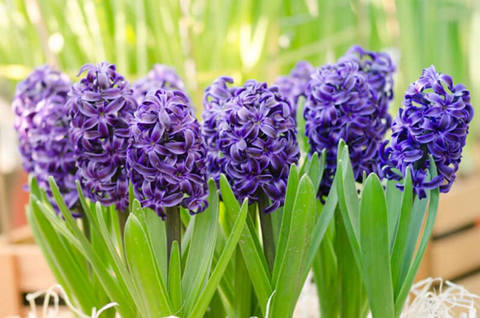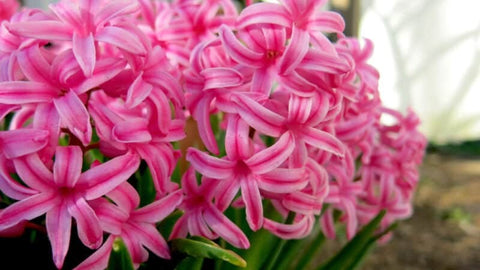Hyacinths are timeless beauties that have graced gardens and Easter displays for generations. These spring-blooming perennials from the Hyacinthus genus not only symbolize peace, commitment, and beauty but also infuse your garden with their intoxicating fragrance. Whether you're a seasoned gardener or a novice, there's something to love about these versatile plants.

A Brief Introduction to Hyacinths
Originating from the eastern Mediterranean region, hyacinths have a rich history. Europeans first identified them in Turkey in the 1500s, and their popularity soared in the Western world by the 1700s. Dutch bulb growers even developed around 2,000 cultivars by the 1800s.
It's important to note that hyacinths are not to be confused with grape hyacinths (Muscari) or the invasive common water hyacinth (Eichhornia crassipes). Hyacinths belong to the Asparagaceae family, related to asparagus, and there are three species: litwinovii, transcaspicus, and orientalis. All modern garden hybrids and cultivars come from the orientalis species, often referred to as Dutch hyacinths.
Varieties of Hyacinths
Hyacinths come in various types, including single, double, and multiflora. Single types feature tightly packed, single-blossom florets, while double types have more petals due to tightly packed, double-blossom florets. Multiflora types are loose and sport several flower heads.
Here are ten magnificent Dutch hyacinth varieties to consider for your garden:
Delft Blue: With fragrant velvet blue tones and green foliage, this variety is great for mid-spring bouquets.

Carnegie: A show stopper with flashy white florets, this beginner-friendly option blooms for up to three weeks.
Pink Pearl: This pink-powered hybrid stands out and fully blooms halfway through spring.

Anna Liza: A vintage hyacinth with lavender pink starlet florets and old-world charm.
City of Haarlem: A pastel cream to yellow variety that's an early bloomer and a reliable forcer.
Jan Bos: Vibrant reddish-pink blooms make this variety a fantastic option for collectors.
Top White: Dramatic white blossoms on strong green stems with a delicate fragrance.
Miss Saigon: Mystic lilac to purple tones make this hyacinth an elegant choice for cooler regions.
Gipsy Queen: Smokey salmon with a hint of gold in the center of each star-shaped floret.

Midnight Mystic: Dark, nearly black blossoms that stand out from the traditional colors.
Cultivating Hyacinths
To grow hyacinths, plant them in the ground in the fall for spring flowering. Ensure you plant them at least 4-6 inches deep in well-draining soil with full sun or part shade. Avoid growing hyacinths in the shade as they thrive with six to eight hours of sunlight a day.

Hyacinths have average moisture requirements, so maintain a balance between watering. Plant bulbs in groups of more than five for the best impact, but avoid crowding them too much.
Remember to stake taller varieties to prevent them from toppling over, especially in windy areas. Trim off spent blooms to encourage regrowth the following spring, and wait until foliage turns yellow before removing it.
If you want to spread out the show for the next year, dig up and separate the bulbs when they're done blooming. Store them in a cool place until fall when you can replant them.
Pests and Diseases
While hyacinths are generally low maintenance, watch out for late spring frosts that can cause blackening spots on foliage. They are not prone to many diseases but can contract bulb diseases like Botrytis blight.
Fortunately, hyacinths are toxic to deer, chipmunks, squirrels, and rabbits, so they are rarely eaten. However, slugs and snails might be attracted to their foliage, so take measures to protect your hyacinths from these slimy pests.
When handling hyacinths, be cautious, as they can cause skin irritation in sensitive individuals. Lastly, remember that hyacinths are toxic to pets, livestock, and humans, so avoid consumption at all costs.
Growing hyacinths can bring bold fragrance and bright colors to your garden, making them a wonderful addition for both seasoned and novice gardeners alike. Whether you choose to plant them in pots, beds, or borders, these timeless flowers will surely captivate your senses and enhance your outdoor space. Happy gardening!









